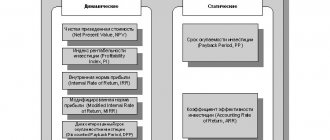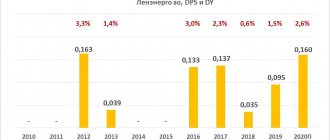How can a newcomer to the stock market deal with fear?
I will be a hypocrite when I say that if you have determined a comfortable amount for trading, thought out a trading strategy and placed stops, you will not feel fear .
When securities hover above or below a sign line, sometimes you just want to press the “panic button” to get out of the position. But attempts to outwit the market and play contrary to the laws of technical analysis most often end in failure. Lost profits, wasted losses and wasted nerves.
What do I do at such moments? Anything, just don’t look at the monitor. I write articles and communicate with clients. I was very lucky: my favorite GUM is two metro stations from work.
If you are tempted to look at what is going on at the auction, do it through the prism of reading a book. Which one? It seems to me that at such moments it is good to read “Anthology of Stock Humor”. Eh, in 2008 my colleagues and I wore it down to holes. So now, I'm tormenting R. Colby's heavier book, The Encyclopedia of Technical Indicators. The book is big and will last a long time. By the way, this is one of my favorite books - I recommend it! In addition to the basic things in theory, there are very inspiring moments for your own factual analysis of Russian charts. Therefore, it is important in this book not to miss the seemingly naive moments about the presidential and New Year's rally, about the January barometer.
Position of the Russian Ministry of Finance
In letters of the Ministry of Finance of Russia dated 09.16.11 No. 03-03-06/1/556, dated 2.11.09 No. 03-03-06/1/723, dated 06.9.09 No. 03-03-06 /1/371 it was noted that the payment from the supplier-seller to the buyer of goods for their placement on store shelves in a specified location is not related to the buyer’s obligation to transfer property (property rights) to the supplier, perform work or provide services under the supply agreement.
Accordingly, the costs of the supplier-seller to pay for the actions of the buyer - a retail trade organization, carried out by the latter under a retail purchase and sale agreement cannot be considered as economically justified expenses for profit tax purposes. At the same time, there may be cases when an agreement concluded between a supplier-seller and a buyer (store) determines the purposeful implementation by a retail trade organization for a fee of specific actions that ultimately ensure the creation of specific circumstances that attract additional attention of buyers to the name and range of goods of the supplier-seller .
Based on clause 11 of Art. 9 of the Federal Law of December 28, 2009 No. 381-FZ “On the Fundamentals of State Regulation of Trade Activities in the Russian Federation” services for advertising of food products, marketing and similar services aimed at promoting food products can be provided by an economic entity engaged in trading activities, on the basis of contracts for the provision of relevant services for a fee.
According to Art. 779 of the Civil Code of the Russian Federation, under a contract for the provision of paid services, the contractor undertakes, on the instructions of the customer, to provide services (perform certain actions or carry out certain activities), and the customer undertakes to pay for these services. If the customer organization (supplier) has reason to believe that the targeted actions of the contractor (buyer - retail organization) specified in the contract help to attract attention to goods of a certain name sold by the supplier-seller, then such actions can be considered as advertising services. In this case, with proper documentary evidence, these expenses as advertising expenses may reduce the tax base in accordance with paragraph 4 of Art. 264 Tax Code of the Russian Federation.
Confirmation of the actual completion of the service is usually a certificate of completion of work (services rendered). For accounting purposes, it is quite sufficient, however, in tax accounting, the main supporting document must be a contract for the provision of services, or a supply agreement with the condition that the buyer provides merchandising services, which follows from the mentioned position of the Ministry of Finance of Russia.
Based on the above explanations from the financial department and the norms of the Tax Code of the Russian Federation, we can conclude that when calculating income tax, expenses for the display of goods as part of merchandising, as a general rule, cannot be taken into account, however, if the agreement determines the priority display of goods, then these costs can be taken into account within the limits the standard established in paragraph 4 of Art. 264 Tax Code of the Russian Federation.
However, this position of the Russian Ministry of Finance is not controversial.
In accordance with Art. 3 of the Federal Law of March 13, 2006 No. 38-FZ “On Advertising” advertising is information disseminated in any way, in any form and using any means, addressed to an indefinite number of persons and aimed at attracting attention to the object of advertising, creating or maintaining interest in it and its promotion on the market. According to this definition, advertising is information.
By virtue of Art. 2 of the Federal Law of July 27, 2006 No. 149-FZ “On Information, Information Technologies and Information Protection,” information is recognized as information (messages, data) regardless of the form of its presentation.
First of all, advertising must contain some information about the product. At the same time, the display of goods involves placing the goods themselves in places where the goods are sold. The buyer does not receive any additional information as a result of the product display.
Any information (information) is contained only on the product packaging. At the same time, the information contained on the packaging cannot be considered advertising.
A distinctive feature of advertising is its goal - the formation or maintenance of interest in the advertised individual, legal entity, type of activity, goods, ideas and undertakings and promoting the sale of goods, ideas and undertakings. The purpose of placing information on product packaging is different - to provide the buyer with information about the consumer properties of the product, its purpose, composition, storage conditions, date and place of manufacture and packaging, etc.
Providing the specified information (as well as other information containing the main characteristics of the product and its purpose) in accordance with clause 2 of Art. 10 of the Law of February 7, 1992 No. 2300-1 “On the Protection of Consumer Rights”, paragraph 3 of Art. 18 of the Federal Law of January 2, 2000 No. 29-FZ “On the quality and safety of food products” is the responsibility of the seller in order to ensure that consumers can choose the right product.
Identifying information placed on packaging with product advertising does not correspond to the goals and essence of advertising activities.
In addition, the display of goods is based on GOST R 51304-2009 “Trade services. General requirements”, approved by order of Rostechregulirovanie dated December 15, 2009 No. 769-st and put into effect from January 1, 2011, is a necessary component stage in the process of providing services for the sale of goods (clause 4.2 of GOST). Clause 5.5 of the said GOST also indicates that the requirement for ergonomics of trade services provides for the comfort and convenience of customers when purchasing goods, including convenient placement of goods (display) in sales areas, which should ensure presentation, accessibility, convenience, visibility, clear differentiation of different goods groups.
The requirement for aesthetics of trade services provides for stylistic unity, integrity of composition and artistic expression, harmonious design, including for the display of goods (clause 5.6 of the mentioned GOST).
Display of goods, being an integral part of the process of selling goods, may not be considered as a service for advertising goods.
If we are guided by the above, services for displaying goods are subject to accounting as part of other expenses associated with production and (or) sales, in accordance with paragraphs. 49 clause 1 art. 264 of the Tax Code of the Russian Federation (other expenses associated with production and (or) sales).
Note that in accounting, costs associated with payment for services for placing consumer goods on shelves, racks and in specially designated areas, which attract additional attention of retail buyers to the name and range of goods of the supplier, are recognized as business expenses, forming expenses for ordinary types activities, and are included in the cost of goods sold (clauses 5, 7, 9 of the Accounting Regulations “Organization Expenses” PBU 10/99, approved by Order of the Ministry of Finance of Russia dated May 6, 1999 No. 33n).
These costs in the supplier’s accounting are reflected in the debit of account 44 “Sales expenses” in correspondence with the credit of account 60 “Settlements with suppliers and contractors”. To recognize these expenses, it is necessary to have a signed acceptance certificate for the services provided. Expenses are recognized in the amount of their contractual value (excluding VAT) (clauses 6.1, 16, 18 PBU 10/99).
How to curb greed?
I have seen many times how traders overstay their welcome in positions. And the fish, having eaten the worm, calmly swims away. And traders keep waiting and waiting for more production, and in the end they not only lose the remaining bait, but also receive losses. This manifestation of greed can be treated very simply - move your stops in the direction of taking profits .
I have another problem: seeing a technical goal of 50%, which can be realized in six months, I often take money “off the table” if the profit reaches 10-15% in a week. How painfully SibTelecom and RusHydro beat me for my impatience and greed. In a matter of days, they completed the initially desired percentages after I sold the papers.
Now I make a “Solomon” decision in such situations - I close a quarter or half of the position, depending on the pace of movement. At the same time, I don’t particularly suffer from lost profit syndrome. How many securities are there on our market? And on world markets? Can't you really find a new star among this diversity? There will be day - there will be food.
But when searching for stars, don’t confuse dormant papers with those that no one needs.
WHY IS IT IMPORTANT TO FIX PROFIT?
This is a very good question, but everyone must answer it themselves. You just have to understand that consistency is valued in the market like nowhere else. Every action you take must be deliberate. You need to know when to enter the market, when to exit it, and how to follow up on a trade.
Do not forget that trading is associated with such concepts as emotions. Very often, when a trader already sees a floating (unfixed) profit on his trade, he begins to have thoughts in the style of: “Well, take a little more and that’s it...”. It’s trivial that a person simply begins to show greed, he wants more, what the market has given him now is not enough for him.
VIDEO
As a result, a friend simply runs into a sharp market reversal, and his position, with the click of a finger, turns from profitable to unprofitable. Again, this is a sign of lack of system, because the person did not know where he would record the profit.
Inconsistency, one way or another, will lead to losses in the long term. The successful trader is the one who knows how to follow his system flawlessly, even if there is chaos in the market and he does not understand anything.
ARTICLE: Forex Momentum
Fixing profit is one of the key factors that will determine the viability of your strategy. You can clearly know where to open a trading position, but at the same time have absolutely no idea where it is best to take profit.
And now we will talk in more detail about ways to take profits. Of course, I won’t talk about all sorts of trolling stops and so on, because you are probably very familiar with this yourself. I will tell you everything from the point of view of working from levels.
Why is hope needed?
Hope is needed to believe in your strength and knowledge. But in no case should you hope, after your milestones have been broken, that the market is about to turn around and go in your direction. The market doesn't owe anyone anything. It is in vain to try to guess his next move. Learn to follow the trends that emerge. It's simpler and more correct. Alas, awareness of this ancient wisdom comes only through trial and error. And it's no use trying to ask you to take my word for it. Who knows, maybe you have a special gift, or maybe you can successfully play against the market using short-term strategies. You need to try everything, but don’t do outright stupid things like a series of purchases of securities after a 10% increase in a day or long-term “shorts”.
How to set take profit for a short position?
If a trader enters the market in a short position, then in this case he is interested in making money on a decrease in the price level. That is, the correct take profit in this case should be set below the current price value to a level previously calculated by the trader.
By analogy with the previous take profit analysis chart for a position with a short entry, in this case we have the same situation, but only inverted.
Why do we need fundamental analysis?
Fundamental analysis tells us whether it is worth trading shares now or is it better to switch to the foreign exchange market or sit out in the Russian “cache”? Fundamental analysis helps us choose one single stock from a huge number, the issuer of which is reliable, interesting and promising.
Are you shocked? Can you calculate the value of the entire enterprise and then derive the real value of the share? Fabulous! But what will this give you? This cost will only be your guide, and you are just a pawn in the stock market game. The stock army follows the bright guidelines of the consolidated forecasts of well-known companies and investment houses.
It’s better to spend time not studying the reporting, but getting to know the company’s website . Go to the section for shareholders and investors, get acquainted with the company’s key shareholders, the capital structure, the state’s share of participation, and the main news. It will be more useful.
What is merchandising?
The concept of merchandising is not defined by the legislation of the Russian Federation.
In the scientific literature, this concept is interpreted as the preparation of goods for sale in retail; a set of measures aimed at attracting the attention of buyers (placement of goods on the sales floor, design of sales counters, placement of advertising brochures, posters), as well as increasing sales volumes in retail trade. With the help of merchandising, the popularity of brands is ensured by influencing the consumer. Carrying out appropriate activities helps to expand the number of buyers of a certain brand by stimulating their desire to choose and buy the promoted product.
Based on the analysis of the concept of “merchandising” contained in various reference publications, it follows that this term defines the actual set of measures aimed at displaying goods in the best places on the sales floor, ensuring visual highlighting of products and attracting the attention of buyers, determining the best places of the outlet for placement of advertising posters.
The display of a product is its special arrangement on retail shelves, stands, wall shelves, checkout shelves, and other retail space at points of sale. The product is placed in such a way that the buyer, upon entering the sales area, pays attention to the product of a specific manufacturer; this product is constantly present on the counter. A product of a certain category is located among products of the same category, which allows the buyer to quickly navigate the variety of products presented at the point of sale. Thus, the buyer is encouraged to purchase specific units of a product from a particular manufacturer.
How to evaluate news?
Whatever news comes out, from statements by our country's leaders to US macroeconomic statistics, always think about who benefits and needs this news.
Take your time - if the news is global and similar to the truth, you will always have time to join the trend that it will define. Don’t be angry that you didn’t make money on this or that paper because you didn’t know the insider. The price takes everything into account. You didn’t “know”, you didn’t notice the nervous tremors or the high volume.
Regarding US macroeconomic statistics, it seems to me that no one knows the truth. So there is no need to waste time “Armageddon” or praising the overseas economy. US statistics are a convenient beacon for stock market speculation and nothing more. Unlike our statistics, they are released at a strictly defined time and you can always find out the preliminary forecast in stock exchange calendars.
Just don’t be surprised why stocks fall after the release of good expected news. Or they grow wildly after bad ones. The answer lies in the old stock wisdom “buy the rumors, sell the news.” In this case, the rumor is the analysts' forecast, consolidated in calendars.
How to set take profit for a long position?
When a trader enters a long position, his goal is to buy a commodity cheaply and then sell it at a high price after a while. Based on this, the take profit should be set above the current price at a level previously calculated by the trader.
To make it clearer, let's look at the situation depicted in the graph. The up arrow shows us at what price value the position was entered. The level above is the take profit mark, which has already been assigned a price value for fixing the trader’s profit.
At the moment when the price jumps to the calculated level, it will come into contact with the take profit order. As a result, the application is activated, the position is closed, and the trader’s account is replenished with profit .
Is it worth studying technical analysis?
Most traders who come to my courses do not ask this question because they believe that I give a good tool for analyzing the market, and they are immediately ready to use it, while other tools are vague, complex or very late. And this is actually true: if possible, we look not only at the history of charts, but, having noticed patterns and trends, we look to the future, which soon most often confirms our guesses.
However, there are also stock traders to whom technical analysis, especially in its classical form, seems, roughly speaking, shamanism, a subjective assessment . No one knows if this is true, but know that everyone is taught the same way, so no matter how skeptical you are about technical analysis, you cannot do without knowledge of it. You won’t go into the enemy’s camp without knowing his national language, will you?
On the other extreme, some people think that technical analysis drives the market. No, the market will always be ruled by fear, greed and hope. Technical analysis is only their graphical representation.
What is technical analysis for me? This is my main tool – market analysis. The news lies or is late, the probabilistic approach is very doubtful, intuition or a coin give fifty-fifty chances. And the lines that I draw myself, the levels that I define, the indicators that I choose - they never lie. Why do mistakes happen? Because sometimes it is difficult to cope with feelings and trust yourself.
Although in fairness, I note that emotions are not always to blame. Sometimes the market situation is so uncertain, and trading is so volatile, that you don’t know which method of technical analysis to prioritize. Fortunately, such periods are rare on the market and, therefore, you can wait them out in the cache.
Methods that allow you to take profits on Forex!
If you trade using a three-screen system, then you need to be able to determine the level of profit taking. According to data from Elder, the man who founded this system, there are several truly effective methods. Positional, as well as mathematical or tracking stop loss - these are the methods that are suitable for accomplishing the task. We will consider all available methods so that each trader can independently decide on the best option.
| Start trading Forex with the trusted brokers listed below |
Mathematical approach
Here it is necessary to adhere to the risk-reward ratio of approximately 1 to 3. Let's consider an example of this method - the first two screens tell us to buy, the trader starts buying, but puts a stop loss on indicators below the minimum. The gap between buying and selling is 30 points, if we consider our example specifically. Multiplying 30 by 3 we get the distance we need. In general, you only need to set the distance on the chart and set a take profit.
Trailing stop loss
Trailing stop allows you to effectively take profit. Let's look at an example to understand what's going on. We look at the first two screens, everything there is inclined to suggest that it’s time to make a purchase. Place a buy order and place a stop loss below your minimum. We set a trailing stop at a certain distance - in this case, the trader himself must see the situation and act on it.
If we consider the disadvantages of this method, then only one thing can be said - with the computer turned off, you will not be able to count on a normal result. In general, it is easiest to use special 24/7 servers, this way you can avoid unpleasant situations.
Positional approach
Now let's look at another method, in this case, the position is closed in profit if a trend change begins on the first screen. It is very important to monitor all screens at once and react to changes. We look at the first screen, where the MACD is going down. The price is lower from EMA 13, the indicator used. We check the data on the second screen - everything that is happening is only confirmed there. We need to place a sell order and keep the position open until certain changes begin on screen number 1.
If you look at it in general, all the methods are very simple and understandable. It is necessary not only to understand the theoretical part, but also to try everything in practice. If you approach your work wisely, you can provide yourself with truly optimal conditions for making a profit. We guarantee that a trader who is willing to take the time to learn and understand the intricacies of the three screen system will be able to take profits on most trades in the future. The main thing is to act professionally, measuredly, and always understand that the market can change at any moment.
| Read useful sections of the site for successful trading: |
learn more about Forex trading and binary options trading on our websites!
What is profit taking on the stock exchange?
Taking profit on the stock exchange is the final stage of a successful transaction. If the direction of the transaction was predicted correctly, the trader sees growing numbers of his deposit in the terminal. But the price cannot move in one direction. Trend changes occur regularly. Therefore, it is important to close the transaction in a timely manner, without waiting for the loss of funds. There are different types of methods for determining the level for Taking Profit. Some traders focus on classic technical analysis patterns, changing the TP value as the chart moves. Others set a fixed profit amount (for example, 100 points).
An example of an order with preset SL and TP marks.
Setting Take profit using the example of the Transaq trading platform
For those who actively use resistance and support levels to make important trading decisions, the practical part of the article will be especially relevant.
Here it is extremely important to understand the dependence of the take profit order and the final profitability of the transaction . Let's consider this situation: you open a deal to buy shares of a company such as Chesapeake Energy Corporation with the stock ticker SNK. After you form local support and resistance levels on the company’s chart, and the stock manages to reach one of the boundaries and rebound in the direction you need, you receive a signal to open a long position and begin buying positions at a price of $5.4 per share .
In this case, stops will need to be set below the local level, and the take profit limit will be set immediately below the resistance level at $5.95. Thus, it turns out that as soon as the stock rises to the take profit mark, the order will be automatically executed and the position will be closed with a profit.
Setting take profit in the MetaTrader5 terminal
The principle of setting a take profit order is the same, regardless of what instrument you are working with. The TR is set the same when trading shares, when working with CFDs on cryptocurrency, and when speculating on the rates of currency pairs.
The procedure is as follows:
- The trade opening menu is called up with the F9 or through the context menu.
- In it you need to indicate the transaction volume and set the levels at which take profit and stop loss . If you do not work with exotic instruments for which liquidity is low, you can choose any type of filling.
You can change the position of a take profit order by simply dragging it to the desired location on the chart. In this case, the TR amount is automatically recalculated in points and in the deposit currency.
Another way to adjust take and stop is through a separate menu. You can enter it by double-clicking on the SL or TP order. In the menu itself, you can either specify the order value in points ( take into account the digit capacity of the quotes ), or simply set the desired price level.
If you have not yet chosen a broker, I recommend trying to start trading with United Traders or Just2Trade. Both companies have low requirements for start-up capital, the comfort of work and the speed of withdrawal of money are excellent.
| Company | Just2trade | United Traders |
| Minimum deposit | From $100 | $300 |
| Commission per cycle (buy + sell trade) | 0.006 USD per share (min. 1.5 USD), 0.25 USD for each application. that is, per lap – $3.50 | “Beginner” tariff – $0.02 per share Average $4 per round |
| Additional charges | The ROX platform will cost at least $39/month. (for the American market), for an additional $34.50 they connect Canada/TSE, Level II On the over-the-counter market, the additional fee is 0.75% of the transaction volume (minimum $30), in the case of dividends - 3% from the issuer (minimum $3) | On the Day Trader tariff, they charge $60/month for the Aurora platform, free on other plans |
| Account maintenance cost | $5/€5/350 rub. reduced by the amount of the commission paid | — |
| Leverage | for Forex Up to 1 to 500 for stocks up to 1 to 20 (day) to 1 to 5 (night) | 1 to 20 on the Day Trader tariff, this is the maximum leverage (daily) |
| Margin call | -90% | Standard -30% of the deposit, in technical terms. support can be set -80% |
| Trading terminals | MetaTrader5, ROX | Aurora, Sterling Trader, Fusion, Laser Trader, Volfix.Net, Pair Trader |
| Available markets for trading | Forex, American, European and other stock markets, cryptocurrency | American and other stock markets, more than 10,000 assets in total, cryptocurrency |
| License | CySEC | Lightweight license from the Central Bank of the Russian Federation |
| Open an account | Open an account |
Determine your profit goal
I like graphic patterns. Using them, you can easily measure potential profit targets. These targets allow me to determine how far the market can move once the pattern is confirmed.
Let's look at the head and shoulders figure as an example:
We first measure the distance from the head to the neckline and then project the same distance from the neckline to the bottom of the market.
The measured target gains greater strength if it corresponds to a predetermined support or resistance level:
Use price action
As price action traders, we constantly analyze the price movement on the chart. This helps us determine whether a favorable entry point has arisen or whether it is best to stay on the sidelines for now.
We can use price action patterns not only to enter the market, but also to exit it.
For example, a bullish pin bar that occurs at a key support level means it's time to take profits:
The same applies to graphic formations. A double top pattern that occurs while holding a long position can signal a market reversal.
A price action trader must constantly analyze the price movement on the chart to determine the most appropriate places to enter and exit the market.
The highs and lows of price movement are important
The highs and lows of price movements help us determine the strength of a trend, but they can also be used to take profits.
The market structure itself is based on highs and lows. They give us key levels to trade as well as favorable places to place stop losses.
We know that a downtrend is defined as a market that makes lower highs and lower lows. The opposite is an uptrend, where the market makes higher highs and higher lows. It goes without saying that breaking one of these highs or lows would be a sign that the market could turn around.
The chart below shows a strong uptrend that reversed after forming a lower low:
After a long upward movement, consolidation began. Further lower lows and highs emerged, which finally confirmed the reversal of the previous trend.











